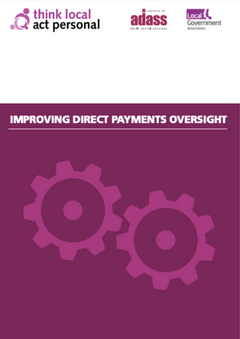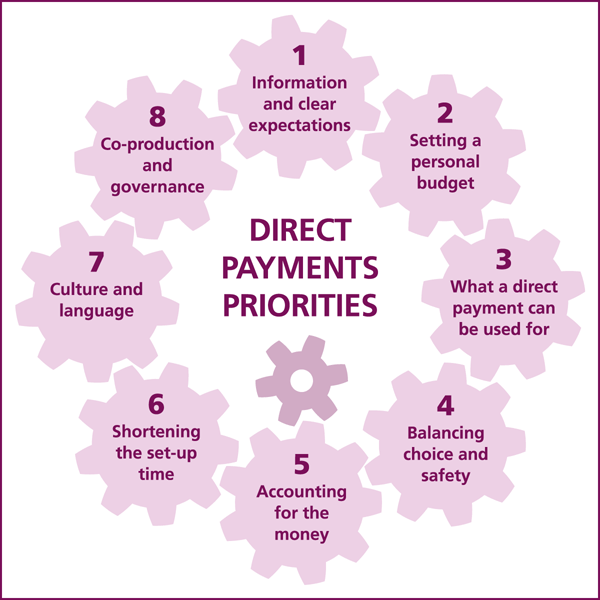Improving Direct Payments Oversight

How can we support direct payment recipients and council staff to maximise control over care and support while also meeting the core obligations of councils?
This document aims to share solutions to improve efficiency and reduce bureaucracy in direct payment oversight (opens new window). Published with the Local Government Association, It identifies some of the barriers and suggests practical steps, including real life examples from councils.

Key areas of concern to address:
- initial information for those using direct payments
- how a personal budget is set, including a fair contribution, determining the direct payment
- the level of flexibility around how a direct payment can be used
- accounting for the money including contingency
- reasonable expectations of those actually using or organising direct payments including family members, recognising that they are often employers
- having a supportive culture that sees direct payments as a positive option and written and verbal communication that reflects this
- initial set up time
- oversight of direct payments in a way which values co-production.
This document is intended for councils to reflect with local stakeholders on how direct payments work locally and what might be improved. Examples from councils on what they have done to reduce bureaucracy are a helpful place to start.
The role of the LGA and TLAP is to support the sector to continually improve, usually by shining a light on good practice and helping to make connections between those leading examples and those places that want to improve.
Our aim is to enable people to arrange the care and support that meets their needs and aspirations in line with the original intentions of the Care Act, whilst enabling councils to meet their obligations.
